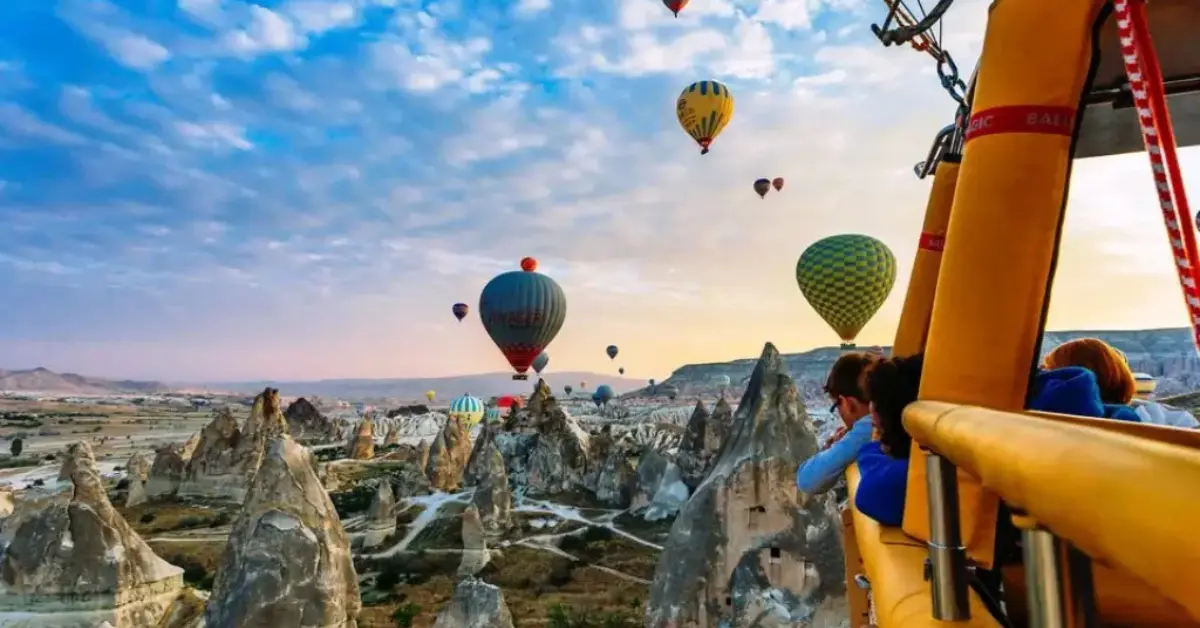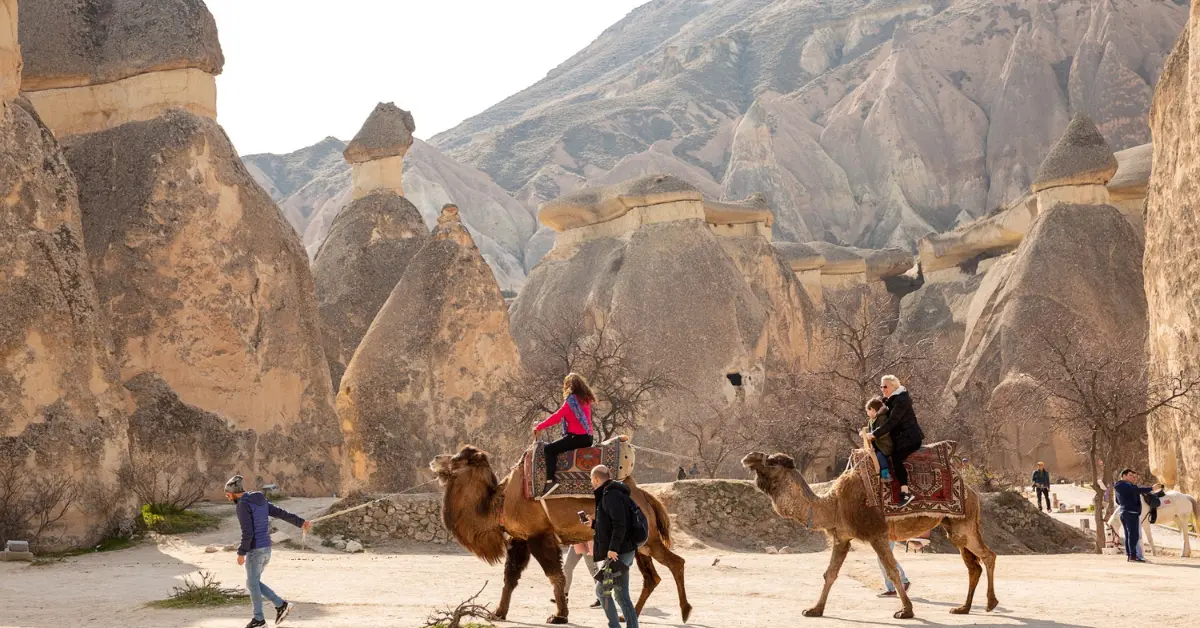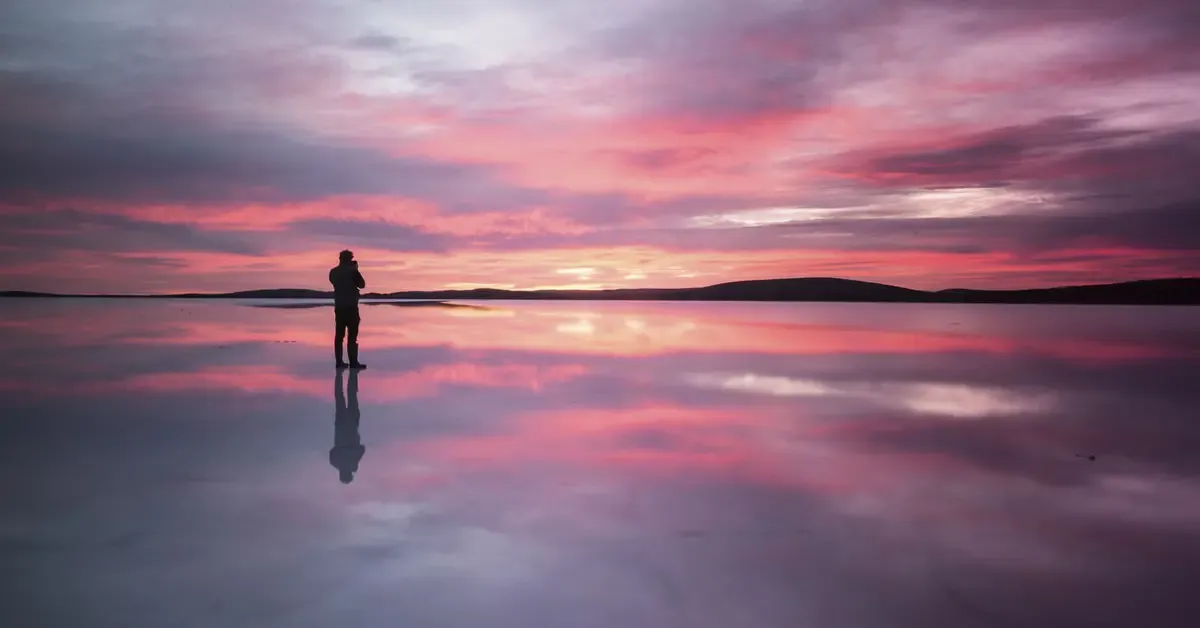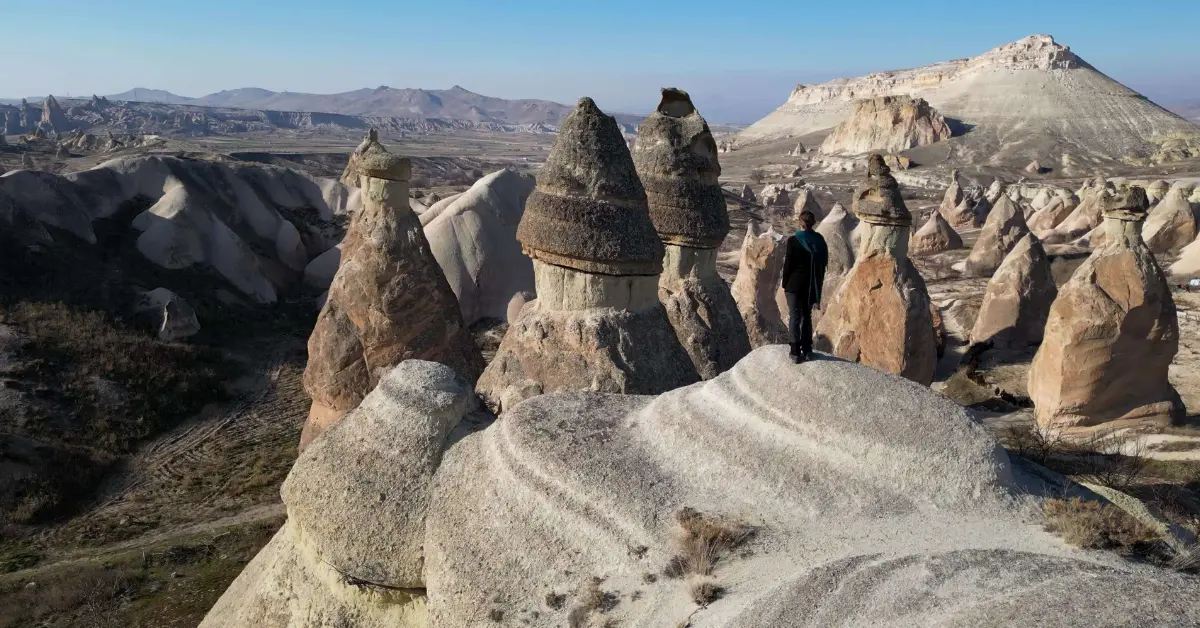For centuries, Cappadocia has captured the imagination of travelers, adventurers, and historians ali ke, and it begs the question: how was this magnificent landscape created-what's the story behind this otherworldly appeal?
I’ve had the privilege of not only wandering through its rocky valleys but also floating over it in a hot air balloon. So let me take you through the history, the quirks, and the jaw-dropping beauty of this magical region.
The Birth of a Volcanic Wonderland
Cappadocia, with its dramatic rock formations and expansive valleys, wasn’t always the mesmerizing landscape it is today. Millions of years ago, this central Anatolian region was home to fierce volcanic activity. The ash and lava spewed by massive volcanoes, particularly Mount Erciyes, layered the land with thick deposits of soft volcanic rock known as tuff.
Over time, wind and water sculpted this soft tuff into bizarre formations, creating the so-called “fairy chimneys” that now define Cappadocia. These tall, thin spires of rock, some capped with harder stone to create mushroom-like shapes, look like they belong on another planet. When I first saw them, I half-expected an alien to pop out from behind one of them.
Nature was busy playing sculptor, but humans soon saw an opportunity in the softness of the rock. In fact, for millennia, people have been carving into this tuff, using it to create homes, churches, and even entire underground cities. And this is where Cappadocia’s story gets even more fascinating.
The Underground Cities
As picturesque as Cappadocia’s surface is, some of its most compelling stories lie underground. You see, Cappadocia wasn’t just a pretty landscape for early settlers—it was a sanctuary. In the first few centuries A.D., early Christians, fleeing Roman persecution, took refuge here. The region’s naturally soft rock made it ideal for hollowing out homes, churches, and entire communities.
The most famous of these subterranean complexes are the underground cities of Derinkuyu and Kaymakli. Walking through their labyrinthine tunnels (which I can tell you is both awe-inspiring and slightly claustrophobic), it’s hard to believe that these cities could house thousands of people. And they weren't just holes in the ground—they had everything a city needed: ventilation shafts, storage rooms, wineries (because who doesn’t need wine in an underground city?), and even areas for livestock.
These cities were ingeniously designed to be defensible as well. Entrances were narrow and hidden, and huge stone doors could be rolled across passageways to block invaders. Cappadocians even had booby traps like pitfalls and narrow tunnels that only allowed one person to pass through at a time, making it nearly impossible for large groups of enemies to infiltrate. And trust me, you’d have to be a pretty bold Roman soldier to crawl into one of those tight, dark spaces.
Yet the religious significance of Cappadocia goes much further than its underground towns.It was also home to early Christian monasticism, with monks carving elaborate churches in rock. The Göreme Open-Air Museum is a UNESCO World Heritage site that houses some of the best examples of the cave churches, many of which retain their Byzantine frescoes from their long lives.
Walking through these ancient sanctuaries, I couldn’t help but feel a sense of awe—these paintings, some from as far back as the 9th century, have a haunting, timeless beauty.
Cappadocia Through the Ages
For thousands of years, Cappadocia has been the crossing point of empires and civilizations because it was located right at the centre of Anatolia. At one time or another, the Hittites, Persians, Greeks, Romans, Byzantines, and Ottomans, in turn, leave their mark in the region.
Entering the Hellenistic era after the conquests of Alexander the Great, it became a kingdom unto itself. It was known that the kings of Cappadocia were even capable of cunning diplomacy at times, playing two larger neighboring empires against each other - Rome and Persia. Nevertheless, by 17 A.D., Cappadocia found its way into the Roman Empire, where it remained an important province throughout the Byzantine era.
This amalgam of rock and hidden valleys had made the region a natural stronghold against invasion. That was until the arrival of the 11th-century Seljuk Turks and then, later, the Ottomans. Once-thriving Christian monastic communities began to decline, although for centuries Cappadocia would remain a multi-ethnic region.
I remember standing at the edge of one of those deep valleys of the region, reflecting upon how much history was beneath my feet. You can almost feel it-from empires that have come and gone, to civilizations that have thrived and then faded. Cappadocia itself is a museum where the past is never to far away.
Modern-Day Cappadocia
Today, Cappadocia is one of Turkey’s most popular tourist destinations, drawing visitors from around the world. And while its history and landscapes are undoubtedly fascinating, what really puts it on the map are the hot air balloons. At sunrise, hundreds of colorful balloons rise into the sky, offering an unparalleled view of the fairy chimneys and valleys below.
I was lucky enough to experience this iconic balloon ride, and let me tell you—floating above Cappadocia’s landscape is nothing short of magical. It feels like you are in a dream, peeking over the horizon with golden light upon the formations of rocks. The silence up there is profound, other than the occasional burst of the burner. It's that kind of moment that sticks long after your feet are back on solid ground.
Tourism has also brought renewed attention to Cappadocia’s rich cultural heritage. Many of the cave dwellings and churches have been restored, and some of them have even been turned into boutique cave hotels.
Yes, you can sleep in the very same kind of rock-cut rooms that people have been living in for centuries. If you’re wondering whether that’s something worth doing—it absolutely is. Imagine waking up in a cozy cave, knowing that beneath you might be an entire underground city just waiting to be explored.
Adventures You Can’t Miss
Cappadocia—just saying the name feels like magic, right? This isn’t just a place you visit—it’s a place you feel. And if you’re wondering what to do when you get there, well, let me share my own adventure with you.
Here’s what I did, what I learned, and why you absolutely have to add these experiences to your list when you go.
Göreme Hot Air Balloon Flight at Sunrise

You know how sometimes you build something up so much in your mind, you’re worried it won’t live up to the hype? That’s how I felt about the famous Cappadocia hot air balloon ride. I mean, it’s in every Instagram feed, travel blog, and glossy travel mag. I was nervous that once I was up there, it’d be just another pretty view.
Nope. It was better than I could have imagined. I remember climbing into that balloon basket at the crack of dawn (still rubbing the sleep out of my eyes), feeling a mix of excitement and nerves. But as soon as we started floating, all my worries melted away. The silence up there is unreal—it’s just you, the sky, and the landscape unfolding beneath you like a painting.
And what a landscape. Fairy chimneys, rugged valleys, distant mountains—every direction you look, it’s like something out of a dream. The sunlight hit the rocks just right, turning them from dusty beige to glowing gold, and suddenly I was snapping photos like my life depended on it.
The balloon ride wasn’t just an item on my bucket list—it was a moment that will live in my memory forever. If you ever find yourself in Cappadocia, there’s no question: do the balloon ride.
Exploring Cappadocia’s Valleys On Camelback

Once you’ve seen Cappadocia from the sky, it’s time to explore it up close. And what better way to do that than on a camel? Honestly, I had no idea camels were even a thing here, but when I saw a tour offering camel rides, I figured, why not? It’s Cappadocia—when in Rome, or, you know, Anatolia.
Getting on a camel is an adventure in itself. They are surprisingly tall, and for a second, I thought I would topple right off. But then I fell into the rhythm with this new, very furry mode of transport. There is something ancient to this experience, like following in the footsteps of Silk Road traders from a time so far back.
The landscapes we wandered through were nothing short of spectacular. The fairy chimneys towered over us, and the sky stretched out in a perfect blue dome. It’s a whole different feeling seeing those rock formations from ground level—like you’ve entered a storybook world where everything is just a little too strange and wonderful to be real.
By the end of the tour, I was thoroughly relaxed and a little in love with my camel (whose name was Basim, for the record). It’s not just a tour—it’s a journey, and one of the best ways to truly feel Cappadocia’s magic.
Amazing Sunset Tour to Salt Lake

Now, I have seen some pretty epic sunsets in my time, but the one at Salt Lake might just take the cake. I actually had no idea this place existed until a local told me about it, and I am glad it did. It's a bit of a drive from Cappadocia-about 90 minutes-but it's totally worth the trip.
The lake itself is wild: covered in a thick layer of salt that glitters in the sunlight like one huge mirror. Walking out onto it feels like being transported into another world-there is nothing but sky above and reflected sky below. It's almost eerie, in the best possible way.
But then the real show kicks in when the sun actually sets. I stood there in bare feet on crunchy salt, watching the sky turn every shade of pink and orange imaginable. The whole lake lit up in these crazy colors, and for one minute, I really thought I was on another planet. No joke, it was the kind of sunset that makes you forget to even take pictures because you’re so lost in the moment.
If you’re ever in Cappadocia and you’ve got an afternoon to spare, make the trip to Salt Lake.
Red and Green Combined Full-Day Tour

If you’re short on time but want to see as much of Cappadocia as possible, the Red and Green Full-Day Tour is the way to go. I decided to do it because, let’s be real, Cappadocia is massive, and trying to see it all on your own can be overwhelming. The tour does a fantastic job of hitting all the major highlights in one fell swoop, and I couldn’t have been happier with how much I saw in a single day.
The Red Tour took me through some of the more iconic spots, like the Göreme Open-Air Museum. To walk through those ancient, rock-hewn churches and see the frescoes still clinging to the walls was like a step back in time. I almost felt I could hear the monks chanting their prayers.
Then, we explored Pasabag (also called Monk’s Valley), where the fairy chimneys are at their most dramatic. Some of these rock formations are so bizarre, they look like they belong in a fantasy novel. There’s even one that’s shaped like a camel—though after the camel ride, I felt like I’d already seen enough of those!
The Green Tour was a whole other adventure. We descended into the Derinkuyu Underground City, which was honestly one of the coolest (and most claustrophobic) things I’ve ever done. This place goes deep—like, several levels underground—and it’s filled with tunnels, storage rooms, and even places for livestock. It’s wild to think that thousands of people once lived down there, hiding from invaders.
Then we walked through the rich Ihlara Valley, which was more like an oasis compared to the dry and rockful landscapes of Cappadocia. The churches carved into the cliffs along the valley were so well-preserved, I couldn’t help but stop every five minutes to admire the artwork.
The day was exhausting by the end, but gladly in love with Cappadocia. The Red and Green Tour showed me just how much history and natural beauty this region has to offer—and trust me, it’s a lot.
Cappadocia: A Place That’s Always More Than You Expect
If I have taken one thing away from my time in Cappadocia, is that this place is so much more than it seems. Sure, the pictures are pretty, and yes, the hot air balloons are to be done. But it is during the quiet moments-the slow camel rides, the unexpected salt flats, the hidden churches-when Cappadocia palpably takes on the feelings.
I went there expecting to check off some travel bucket list items. What I left with were memories of a place that felt otherworldly in every sense of the word. Whether you’re soaring through the skies or wandering through its ancient underground cities, Cappadocia will leave its mark on you, just like it did on me.
So, if you’re thinking about going, don’t hesitate. You’ll never forget it.
Thank you for reading and make sure to subscribe. We're constantly exploring new destinations and share our stories, tips, and the beauty we discover along the way.

